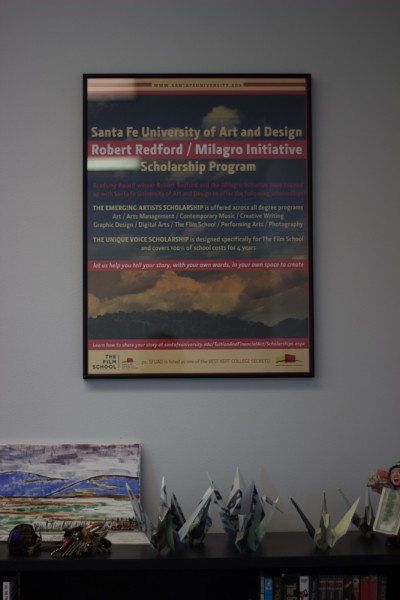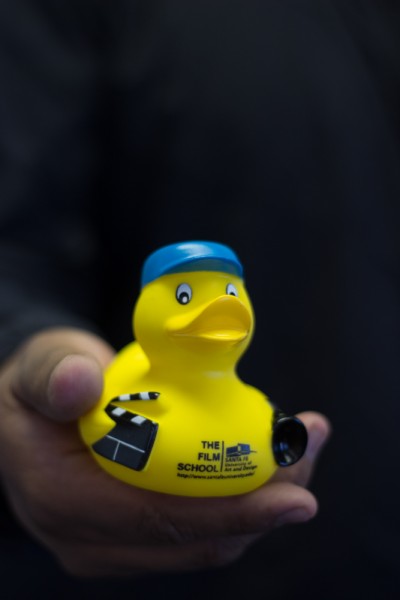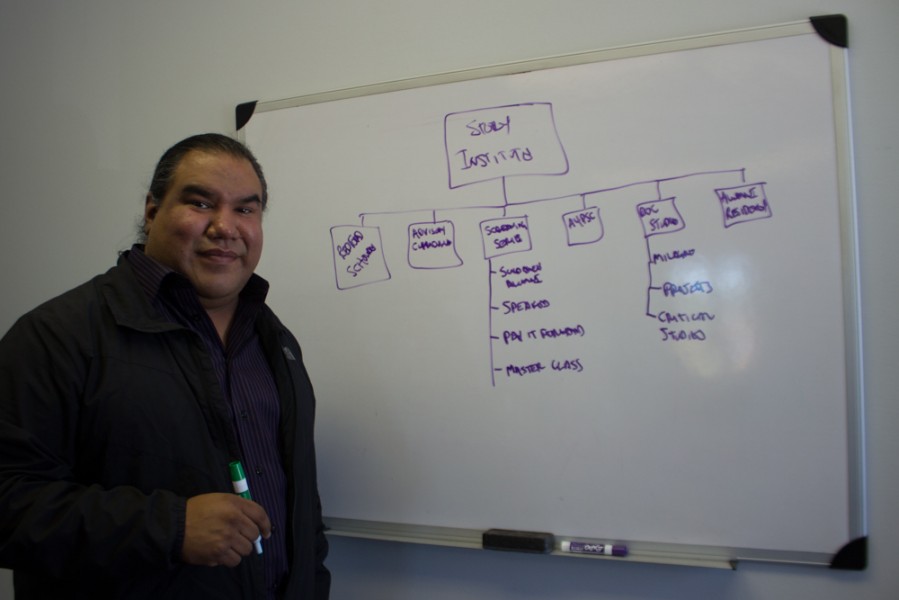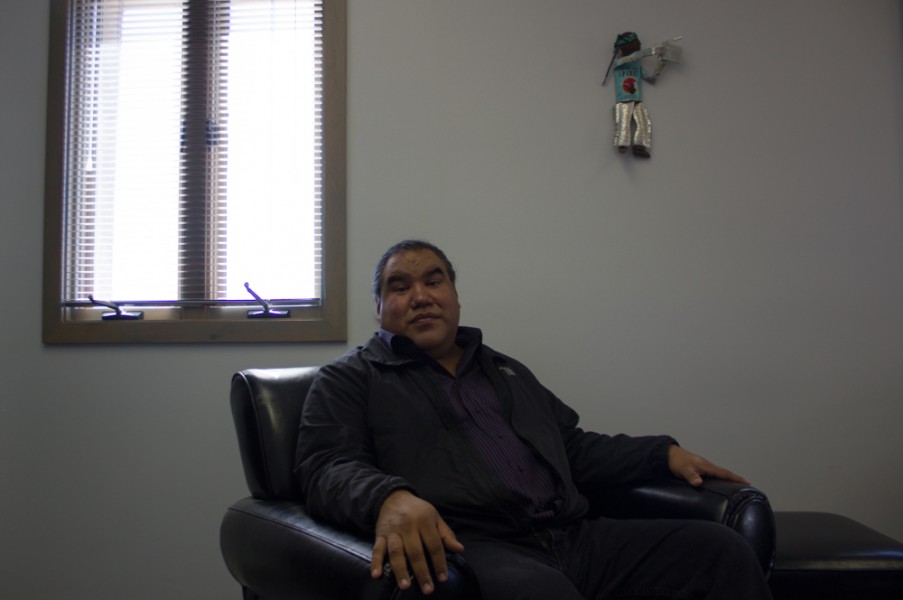Tags
Related Posts
Share This
Eyre in the Family
This article is part of a series of stories covering SFUAD’s new scholarship opportunity, The Robert Redford/Milagro Initiative scholarship, and the key players who have been vital to its success.
“It’s all about networking,” Chris Eyre said, reflecting intently on his past 20 years in the film industry. Eyre, chairman of SFUAD’s Film School, spoke with such emphasis and humble pride about the path he has taken since attending NYU’s Master’s Program, that it appeared as if in this particular moment he had just put it all together, making sense of the incredible journey.
Granted, as someone who had the life-changing opportunity to have his own creations workshopped and mentored by some of the movie-businesses’ finest as part of the Sundance Institute’s Director’s Lab, Eyre is no stranger to the intense and often unnerving world of independent film. “Ride the wave,” Eyre says. “That’s all you can do.”
The wave Eyre refers to is the success into which he so modestly stepped when he met Robert Redford at the Sundance Institute. Eyre describes his first meeting with Redford as both daunting and, quite frankly, a little awkward (for Eyre, that is). Redford was reviewing the piece Eyre had written and created during his stay at the Sundance Labs. Eyre recalls Redford’s criticism as constructive and founded in years of knowledge of the craft, but there was only one problem: Eyre’s film was already finished. There was no time or resources to go back, re-shoot and fine-tune his work into a Redford-approved masterpiece. Eyre best described his reaction to this critique with a giant gulping “Huh?!”
However, after spending time with Redford and learning more about the evolution of a filmmaker’s skill-set, Eyre found that those critiques were not calls-to-action, but solid advice for the future. It was even more apparent that Redford truly approved of Eyre’s approach toward filmmaking when he agreed to be an executive producer on two of Eyre’s other films, Skinwalkers and A Thief of Time, not to mention that after Redford’s coaching, Eyre’s film Smoke Signals won the Audience Award and the Filmmakers Trophy award at Sundance in 1998 (in addition to seven wins and nine nominations at various other film festivals)
It was at the Director’s Labs that Eyre not only met Robert Redford, but also Kathleen Broyles, the production coordinator at Sundance. Broyles, whom now works as the director of the Milagro Initiative, was approached by Redford a few years ago when it was announced that New Mexico would be granted new incentives for bringing film production to the state. Redford wanted to give back to the people who had helped him throughout his own journey and, since Broyles lived in Santa Fe, it only seemed appropriate to collaborate with someone who was already familiar with the “Sundance Family.”
When Eyre became chairman of SFUAD’s film school, the bonds he forged at Sundance brought the opportunity of a new scholarship to SFUAD for not just New Mexicans, but artists from all around that eager to tell their stories. “Art school is a big risk…a difficult argument.” Eyre admits. He said this not to discredit the very school in which he teaches, but to emphasize the importance of the students who inhabit it. They’re taking a giant leap toward a career that requires an ample amount of footing.
Eyre encourages all different methods toward students reaching their goals and most certainly does not discount luck as a contributing factor. However, when he says that the film industry is about networking, believe it. Staying in contact with people and reminding them that your story and your perception of the world is not only unique enough to be spread to millions of people, but also important enough for those people to care, is a pertinent idea for young filmmakers today.
Eyre used this video as an example of Redford’s vision and his passion for story-telling.











 Jackalope Magazine is the student magazine of Santa Fe University of Art and Design. Building on the interdisciplinary nature of our education, we aim to showcase the talent of our university and character of our city.
Jackalope Magazine is the student magazine of Santa Fe University of Art and Design. Building on the interdisciplinary nature of our education, we aim to showcase the talent of our university and character of our city.
0 Comments
Trackbacks/Pingbacks